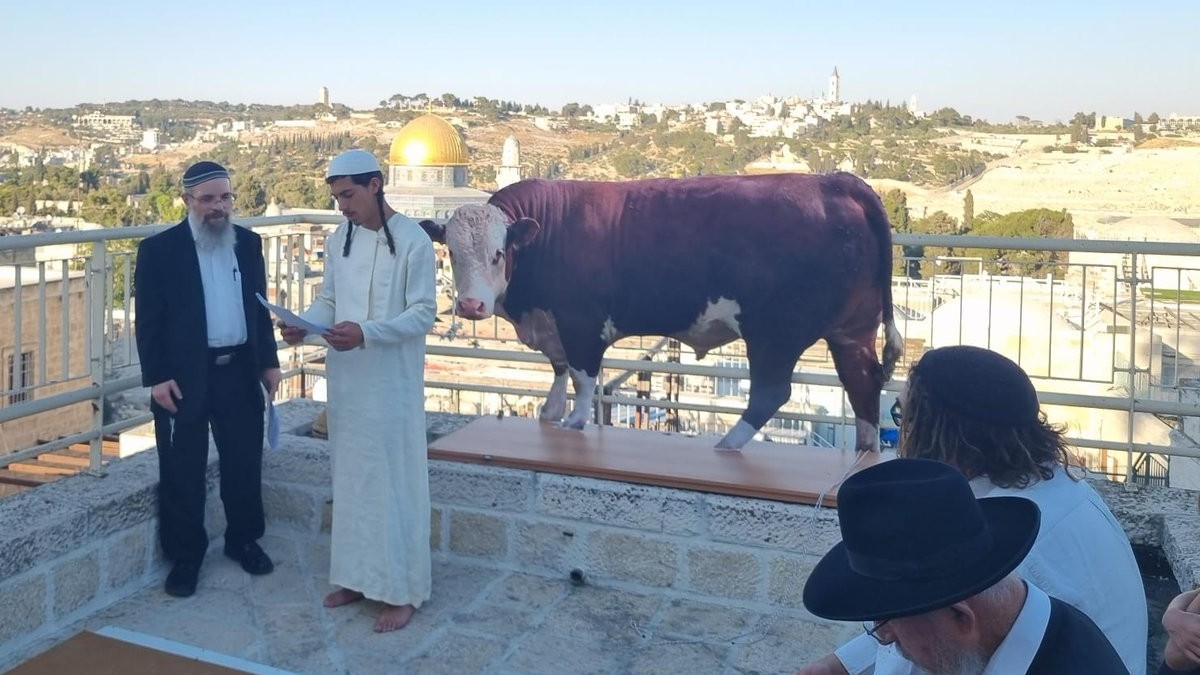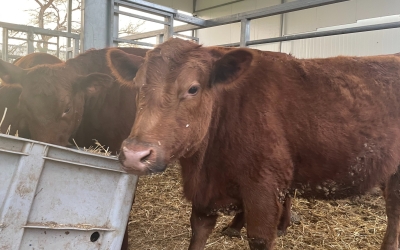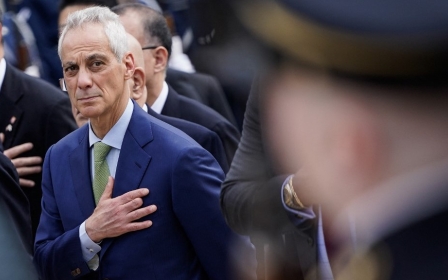Israelis practise red heifer ritual in front of Al-Aqsa Mosque

A group of religious Israelis have been pictured practising the ritual of the red heifer, which is meant to herald the building of a new Jewish temple on the site of Al-Aqsa Mosque.
According to Jewish tradition, the ashes of a perfectly red heifer cow are needed for the ritual purification that would allow a third temple to be built in Jerusalem.
That temple, say radical Jewish groups, must be constructed on the raised plateau in Jerusalem’s Old City known as the Temple Mount, where Al-Aqsa Mosque and the Dome of the Rock shrine stand today.
Some believe this will herald the arrival of the messiah and possibly even the end of the world.
"Temple worshipers are now practising the mitzvah [religious duty] of a red cow in front of the Temple Mount, which will enable the return of purity and the observance of all the temple mitzvahs," posted journalist Yinon Magal on Tuesday, along with a picture of activists from the Temple Institute.
New MEE newsletter: Jerusalem Dispatch
Sign up to get the latest insights and analysis on Israel-Palestine, alongside Turkey Unpacked and other MEE newsletters
In 2022, five red heifers arrived in Israel from a Texas ranch and are now kept in an archaeological park next to Shilo, an illegal Israeli settlement near the Palestinian city of Nablus.
The Temple Institute imported the heifers for the eventual purpose of using them in a ritual after years of searching for blemish-free cows, without a stray white or black hair.
Their eventual slaughter on the Mount of Olives will - according to advocates - allow Jewish people to be purified so they can perform rites and worship on the site of Al-Aqsa Mosque.
Research by a professor at Bar Ilan University estimated that the ashes of one cow could be made into enough cleansing water for 660 billion purifications.
The cow being practiced upon in Magal's image does not appear to be one of the five red heifers from Shilo - rather, it seems to be a cutout.
The traditional site of the ritual, the Mount of Olives, is seen in the background on the other side of Al-Aqsa Mosque, suggesting the practise run was performed within the Old City.
The status quo in Jerusalem has long maintained that Jewish prayer is forbidden on the raised plateau in occupied East Jerusalem.
The site is believed to be the location of two ancient Jewish temples. Jews are permitted to pray at the Western Wall, which runs along one side of the hill and is regarded as the last remaining part of the Second Jewish Temple that the Romans destroyed in 70 CE.
Restrictions on non-Muslims entering the mosque have been in place since the Ottoman status quo designating Jerusalem's holy sites to its sects was established in 1757.
The Chief Rabbinate of Jerusalem has also, since 1921, officially banned Jews from entering the Temple Mount. It ruled that Jews are forbidden to enter the site unless “ritually clean”, which is impossible without the ashes of a red heifer.
Over the past century, religious Zionist groups - including the Temple Institute - have advocated for the return of Jewish prayer at Al-Aqsa, with some even advocating the demolition of the mosque and reconstruction of the temple.
Middle East Eye delivers independent and unrivalled coverage and analysis of the Middle East, North Africa and beyond. To learn more about republishing this content and the associated fees, please fill out this form. More about MEE can be found here.





